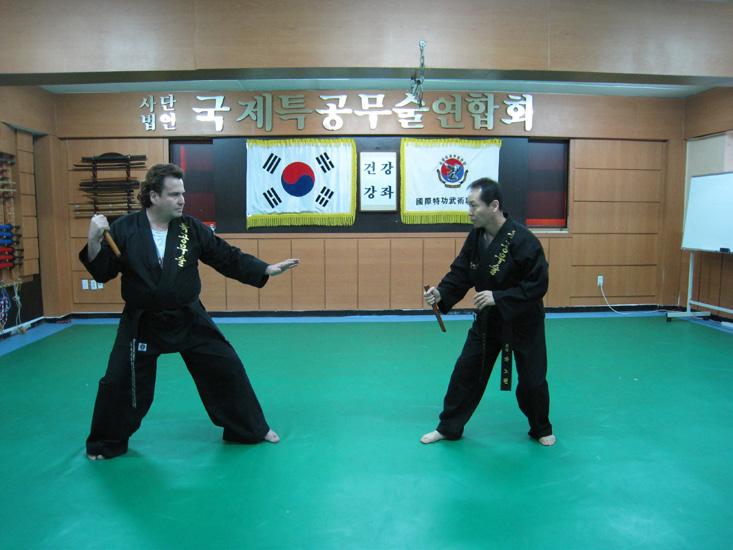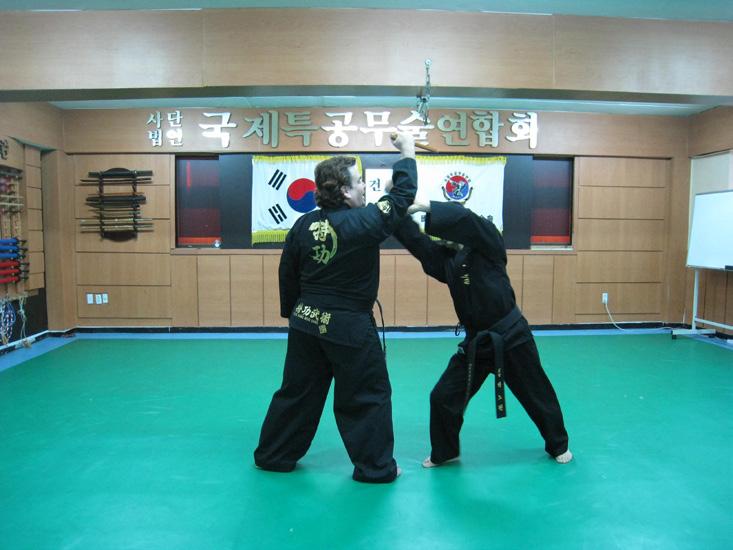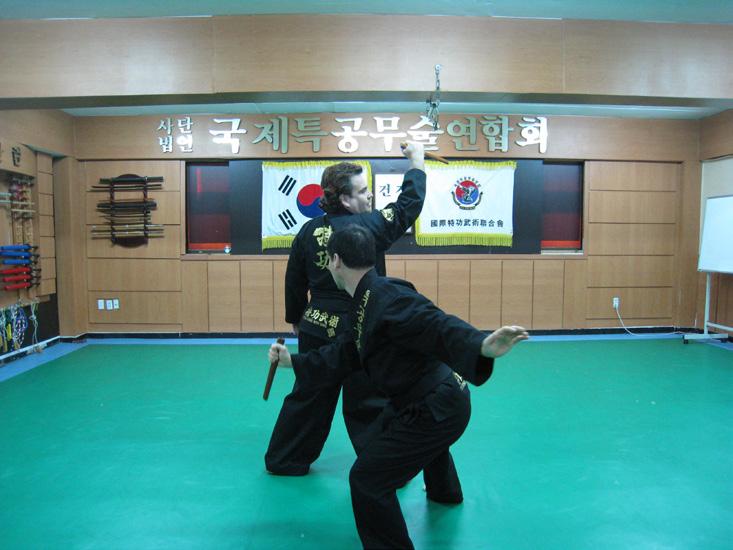
7 minute read
TEUK GONG MOO SUL (p7 SMASTER Guy E. Larke
Reach Out and Touch Someone Enter Teuk Gong Moo Sool (Part 7)
by Master Guy Edward Larke
Advertisement
Sometimes It’s Better to “Not” Get the Point…
Out of all the threats man has faced from one time or another, one of the worst has to be the knife fighter. Even the mighty Samurai many times fell prey to their Shinobi counterparts who employed far shorter blades. Now with the martial arts revolution well established in the world, the average knife fighter is even better prepared than a few decades ago. The idea of doing jump spinning hook kicks to disable a knife fighter is a sure way to see an early grave. It should be no surprise that GM Park’s discipline has a strong knife defense component. The techniques for this method of defense are taught at the upper colour belt level. By the black belt level the focus is much more concept based as he firmly believes that when the time comes there is no time to consider exact combinations. The following concepts are in addition to all the other lessons discussed in previous articles from stances to breathing to body positioning. According to GM Park your senses are important. You cannot hear the fighter so you need to focus on your sight. You first have to consider which hand the blade is in. Secondly, what kind of grip is being employed. A third consideration is type of attack. In TGMS they are divided into 5 basic types: • Stab • Cut • Slash • Jab • Backslash A fourth consideration is the distance between you and the assailant. Number five would be if the intended target point is high, middle or low. With those considerations taken into account quickly you need to react. In TGMS stepping VS a knife is done forward, sideways or diagonally with blocks being employed downwards, sideways or upwards. The big decision you need to make quickly is whether you should put your bodyweight into the defense or just snap out a block. You get only one chance! If you decide you prefer to keep a distance you should check the technique quickly with a snapping motion and follow up with a few well placed kicks and/ or upper body blows. For this you use just one hand to check or block quickly and counter simultaneously. For those who prefer to keep close and gain control the weapon you obviously close in throwing your body weight in towards your aggressor, then grab, throw or subdue him. For this both hands are required. The 7 examples detailed hereafter are examples of simple defenses against the 5 basic knife strikes (and a few variants) listed previously. As stated these are concept based. More details would be explained in seminars.
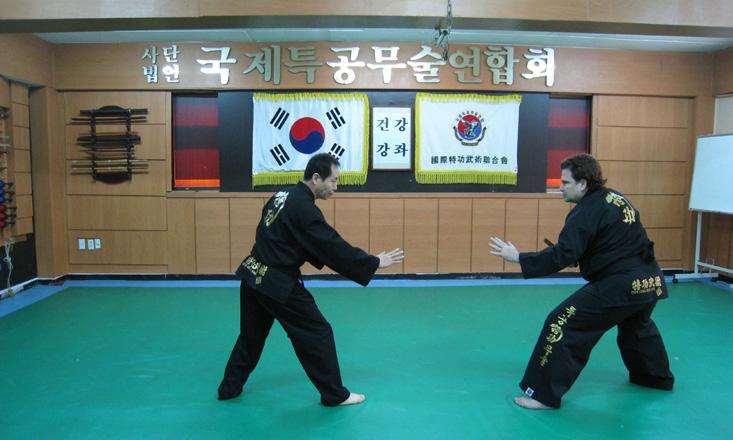
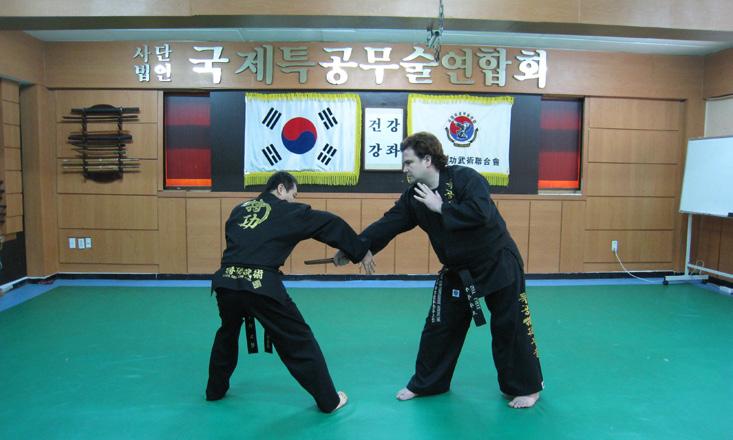
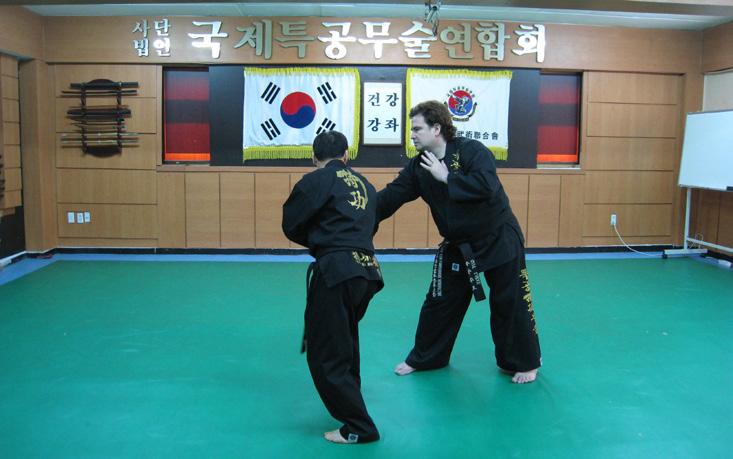
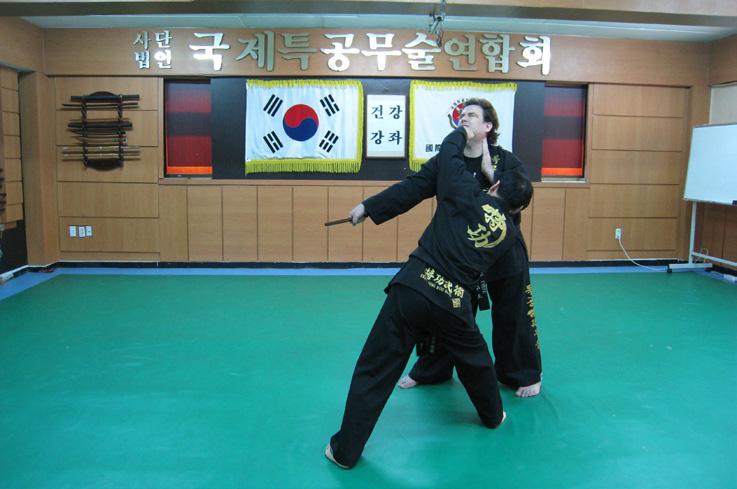
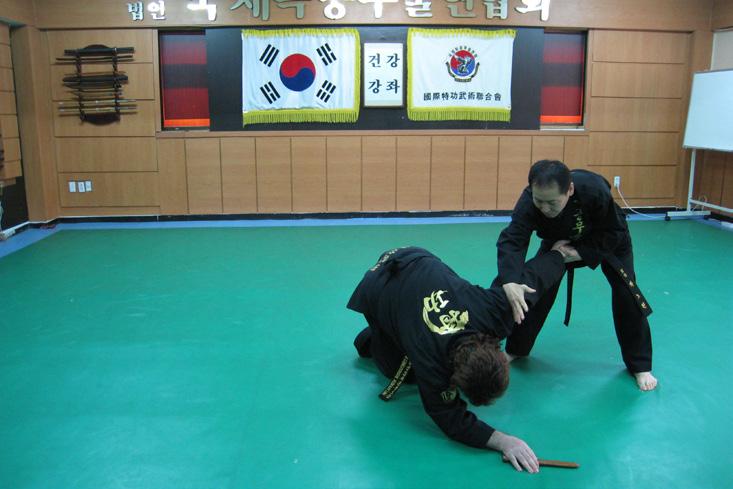
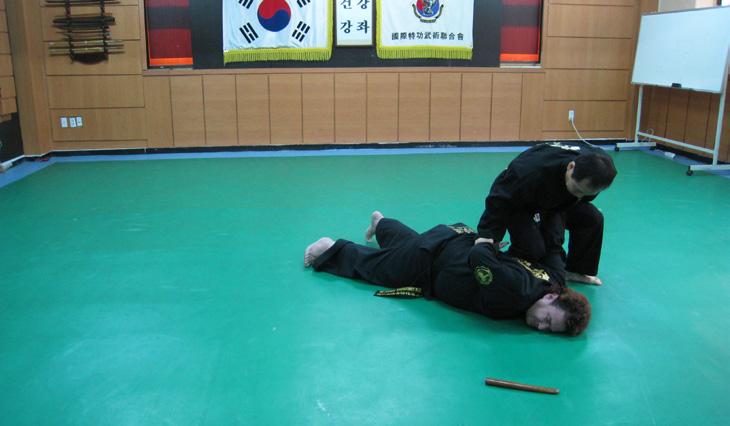
Obviously if you had access to one or could gain control of an assailant’s, you would be far better off if there was a second antagonist. Another advantage to being armed with a knife yourself is that you don’t need to disarm him as quickly as if you were unarmed. As I mentioned last issue, at this level all the other skills that were covered before come into play. There isn’t much room for error in this game. The grips, strikes and appropriate targets that are typically employed in TGMS knife fighting are just a framework with which the practitioner can build on. Every attacker and every defender are different so one has to be flexible and dedicate a lot of time to experiment what works for him. For the atypical basic grip GM Park recommends cutting the hands or feet of an advancing assailant (set A).

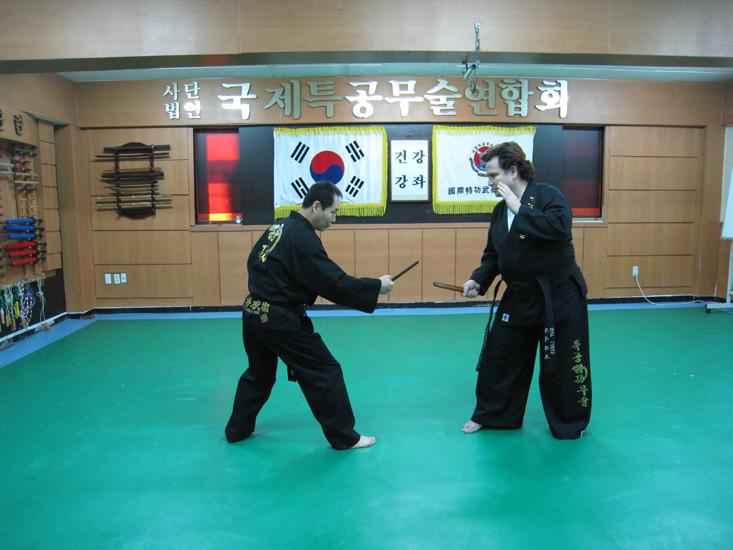
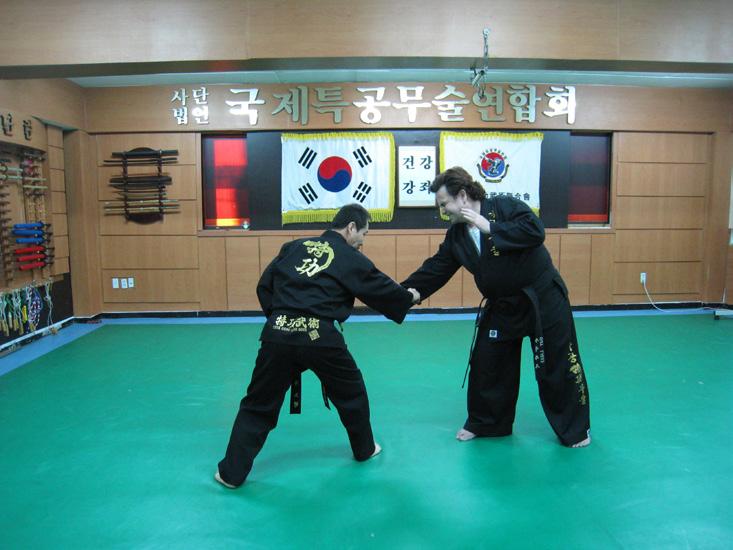
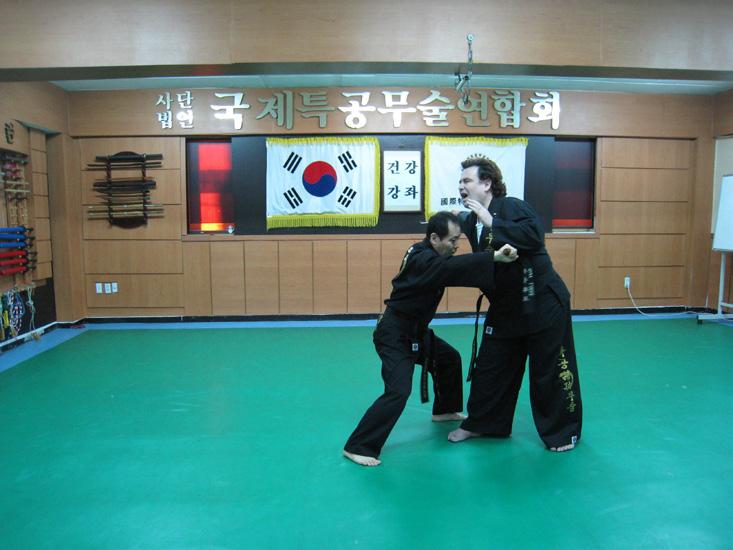

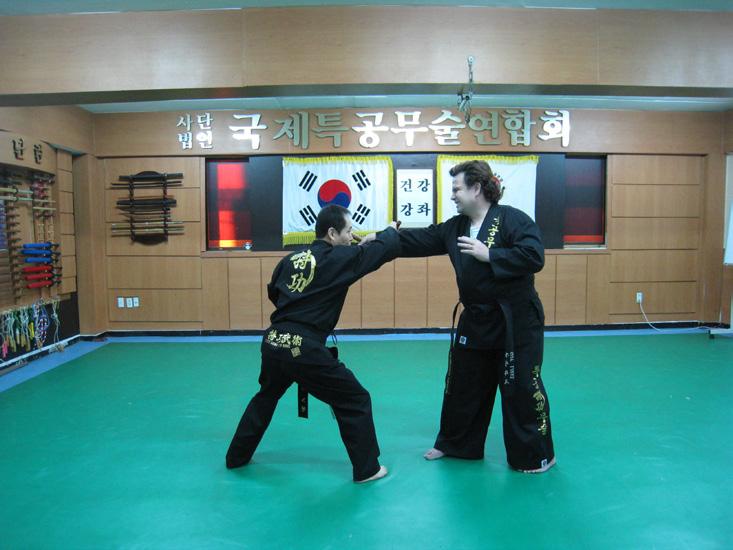
One could also stab the body or neck (set B).
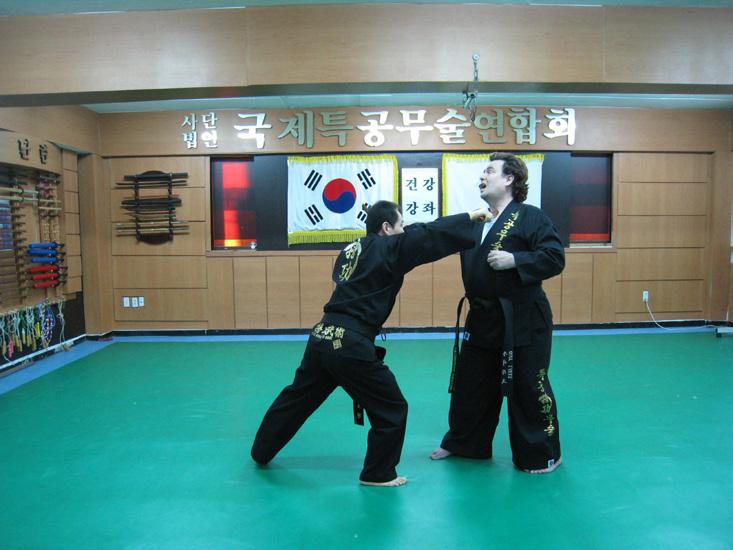
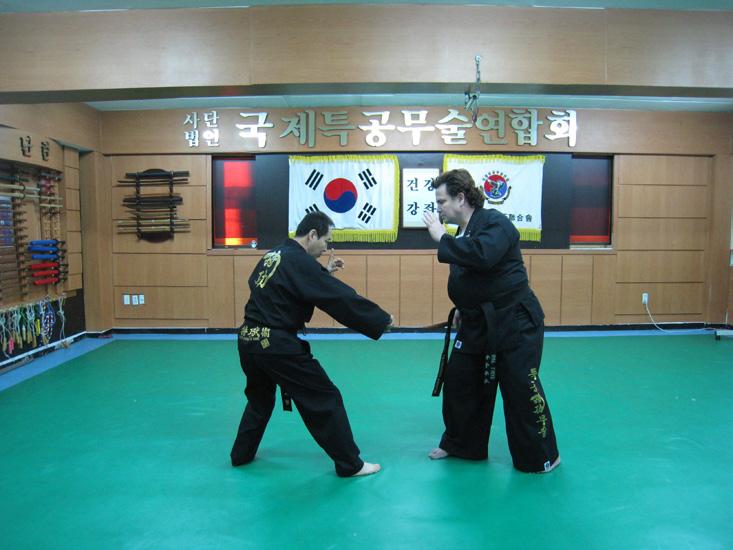
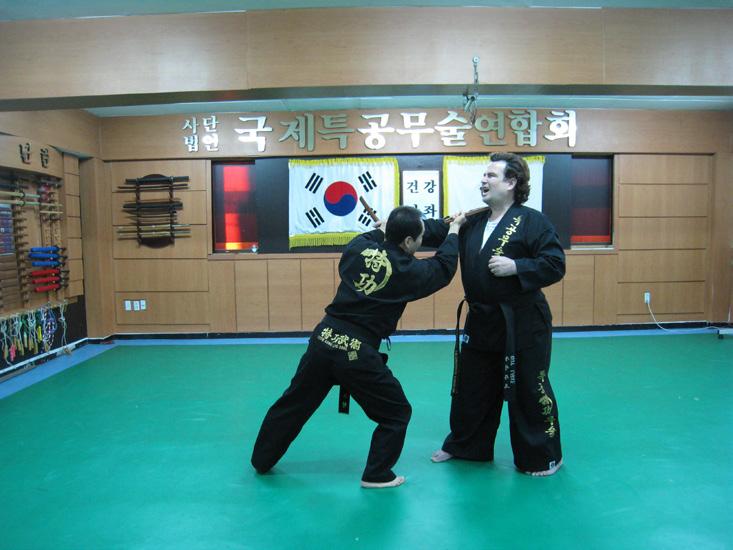
The reverse grip can be used to stab the sides of the torso (set C)
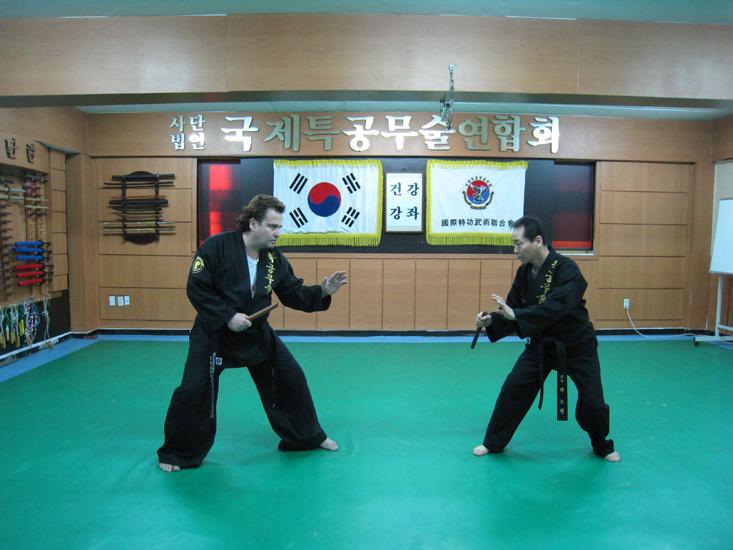
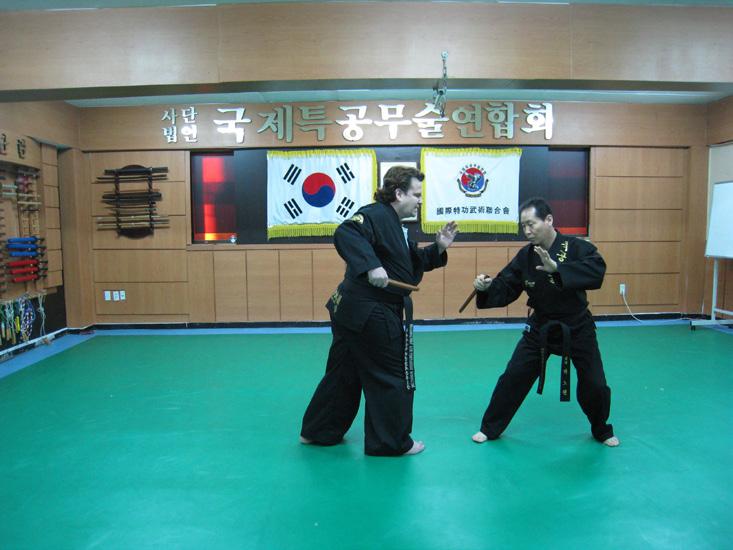
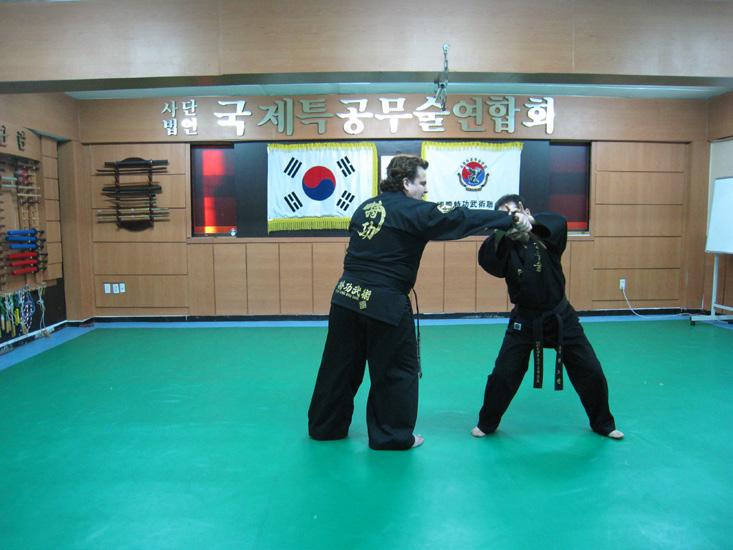

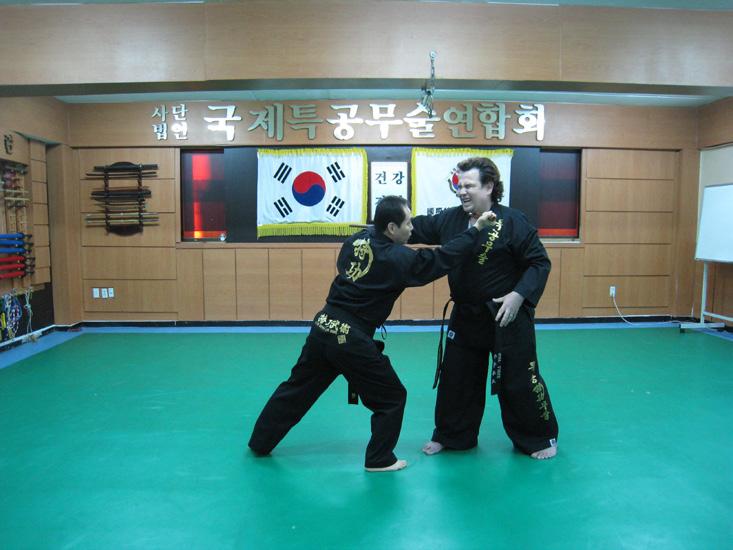

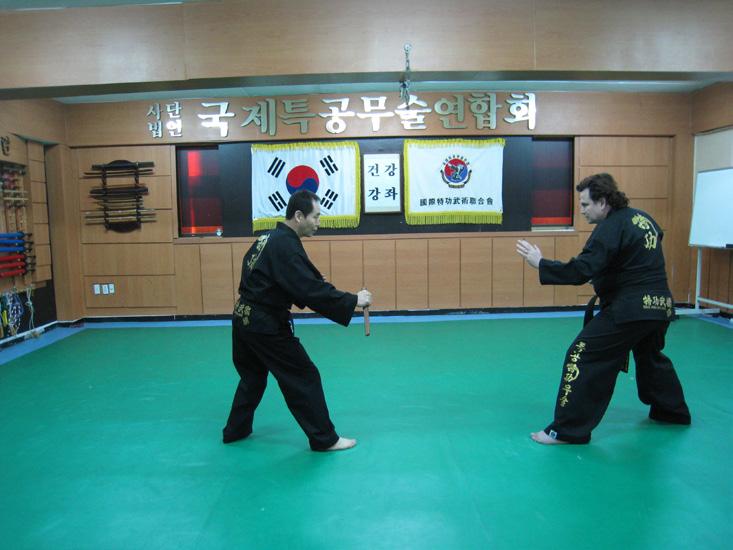
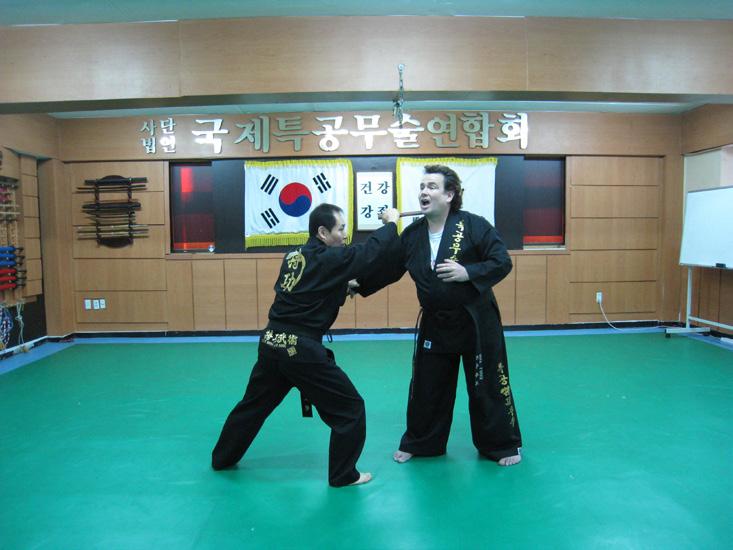
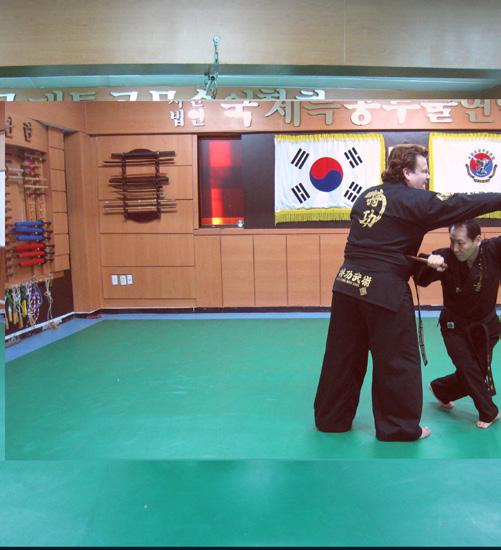
or slash or cut the front (set D).
The ice pick type grip is usually reserved for stabbing high targets (set E)
or the sides of the body (set F).
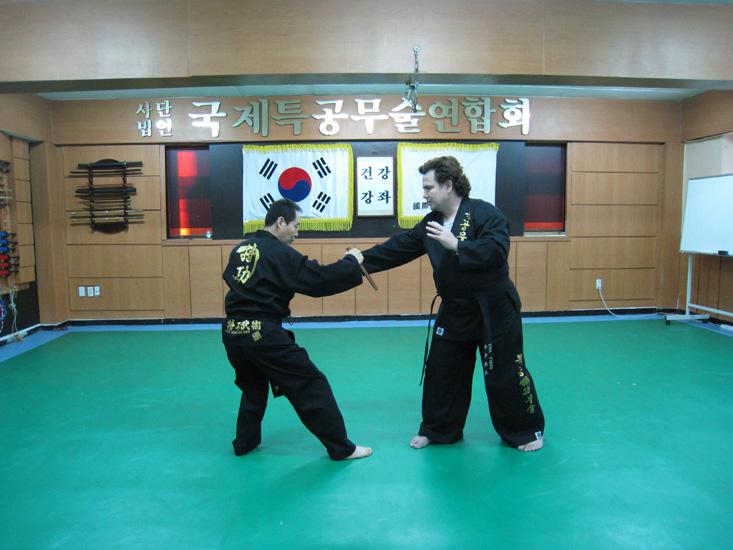
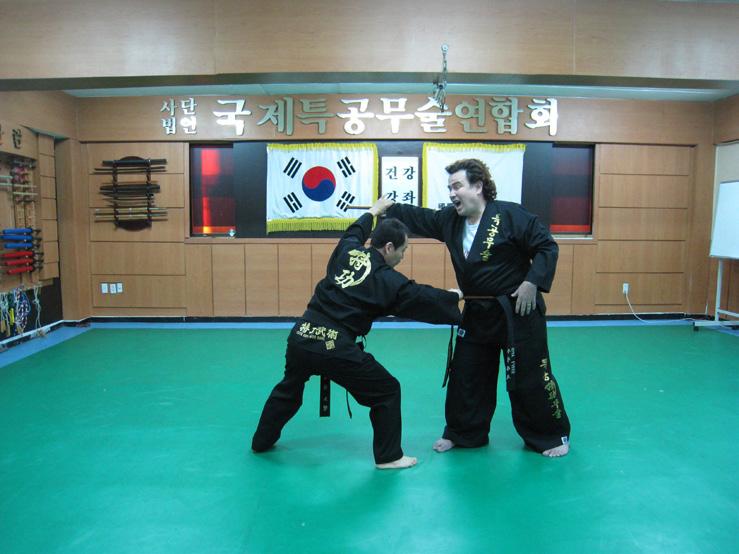
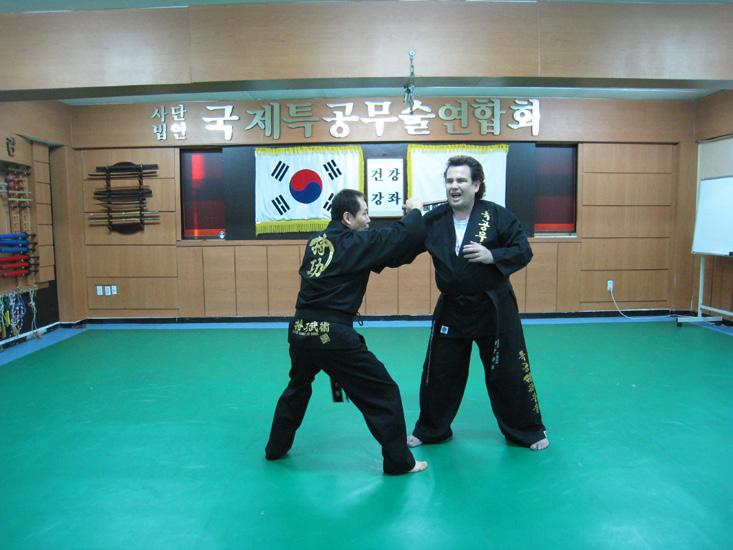
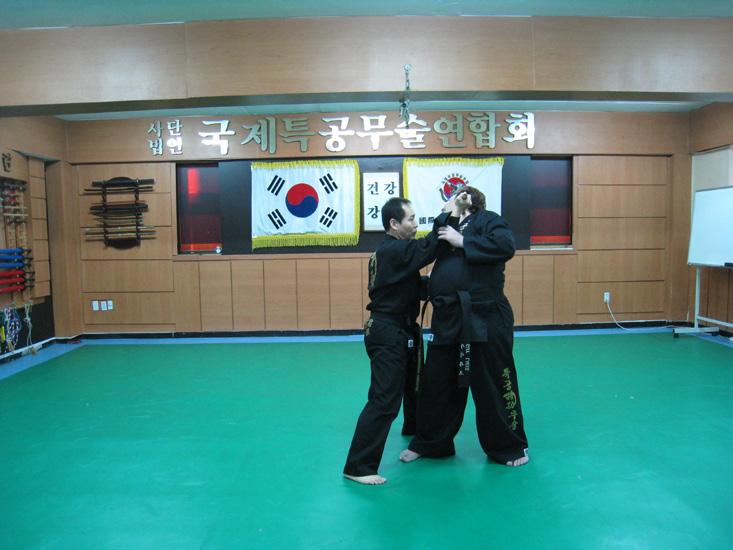
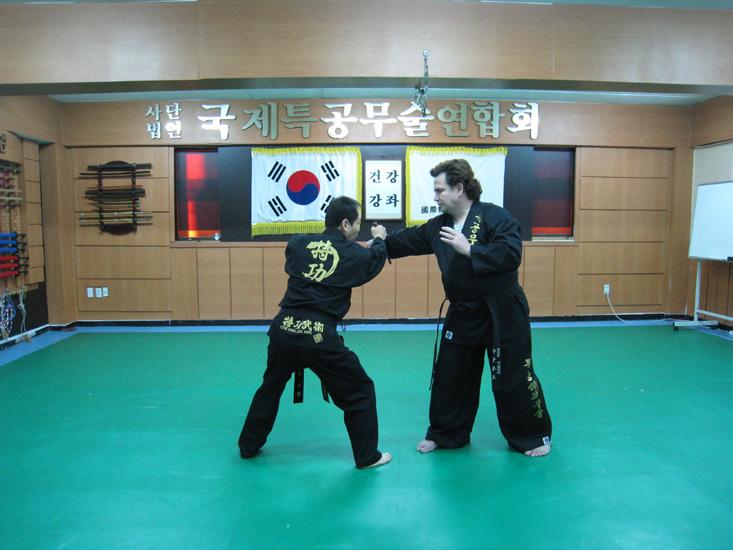
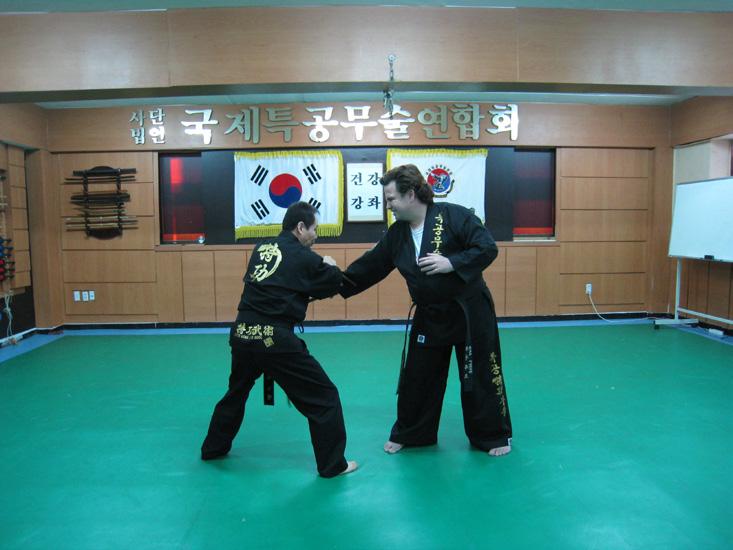

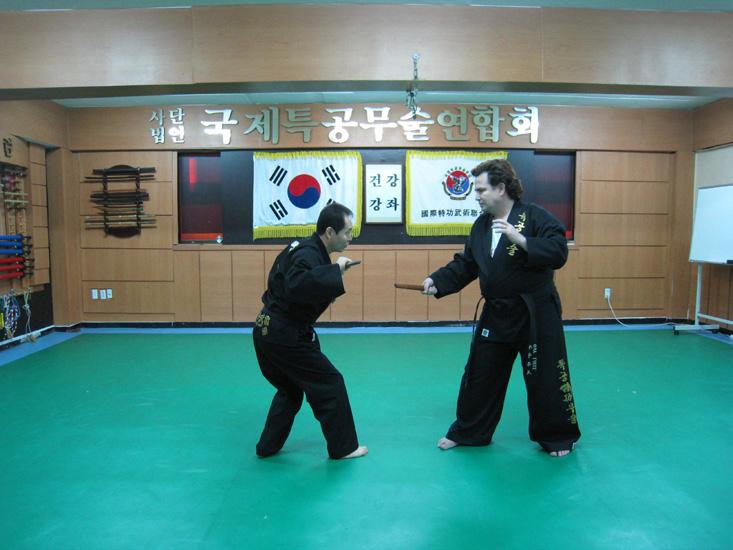
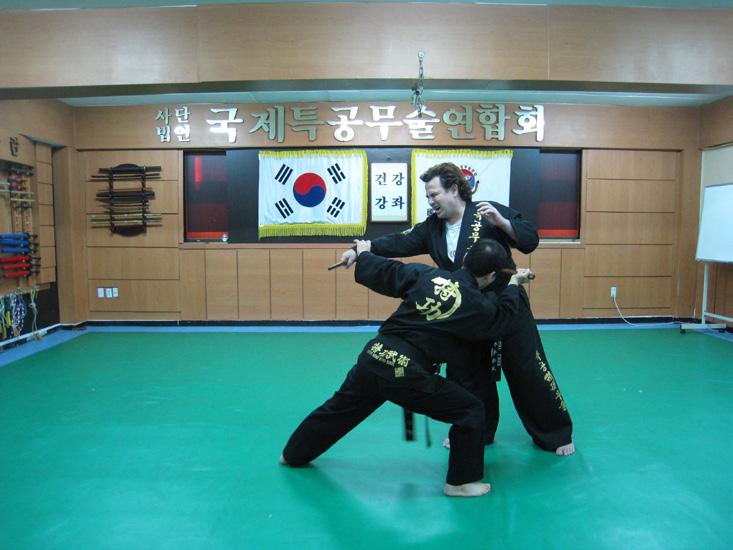
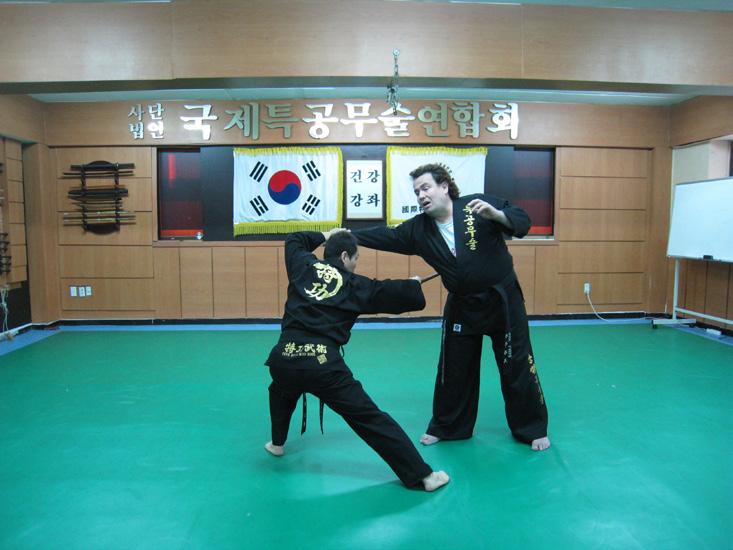
If the practitioner can time it properly, he or she can even spin and strike to the back or the sides of the enemy (set G).
With all grips and attacks some principles never change. They are as follows: 1. Always keep and angle while cutting. Never fully extend your arm. 2. Target pressure points at all times. 3. When striking attack like a snake. Basically, lash out then come back just as quickly. 4. Treat attack and defense as the same thing. 5. Do not think block then attack. Imagine a fencer performing a riposte. 6. Never lose your composure. Appear cool and emotionless. On a final note, GM Park would like to add these types of techniques are for when there is no other option. Too many fighters take what their masters teach them and get into drunken brawls or other types of trouble. As martial artists we are supposed to be above that. Furthermore, we are obligated to protect society. Regardless of the arts you practice he wishes you well and dearly hope that none of you have to actually go into this kind of situation. The following issue will cover defenses vs. a handgun. Until then… TEUK GONG! Anyone interested in learning more about this neoclassical military art can contact me or the association at http://www. tgms.or.kr. Seminars can be arranged and there are books and DVDs available for sale. Master Guy Edward Larke has dedicated his life from a young age to the pursuit of the martial arts, Asian culture and hoplology. It led him to Korea in 2000 and has lived there since then. He lives in Seongnam city with his wife Gi-Ryung and son Alexander. He holds black belts in Taekwondo, Hapkido, Taekgyeon, Bon Kuk Kumdo, Korean kickboxing, Karate-do, Wushu, Cheonji-muye-do, and various other arts. Currently he teaches Teuk Gong Moo Sool, Karate and Cheonji-muye-do full time in addition to writing for various magazines and running Kisa-Do Muye & Marketing. He can be contacted at kisadomuye@gmail.com..
